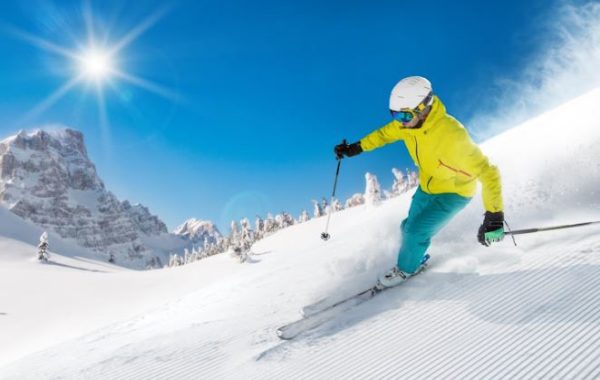
Do you wanna build a snowman? That famous song from Frozen no doubt played on many a South African’s slightly blue-tinged lip as they romped in the surprise dusting of snow that fell in Gauteng and other parts of the country on Monday.
But while scenes of merriment were plastered on news websites and social media, the once-in-a-decade event was over almost as quickly as it had begun.
And any snowmen built would have been on the small side as the snow on the ground was not thick enough in most parts to make a “man”.
If the magical scenes have left you wanting more, especially if you’re harbouring dreams of gliding down powdery slopes on skis or a snowboard, savouring the crisp mountain air and building a life-size snowman, then a ski-resort holiday might be the thing.
And with a bit of planning and research, you can have an amazing holiday experience and keep your budget in check.
Here are some tips on where to go and how to do it on a budget.
1. Sticking to Africa
Staying close to home is an obvious way to keep the spend under control. The unfortunate news is that South Africa no longer has facilities for skiing within its borders. Tiffindell, near Rhodes in the Eastern Cape Highlands, once the only ski resort in the country, is closed. And the next closest option, AfriSki, the only skiing resort in Lesotho, 3,222m above sea-level in the Maluti Mountains, says that while it is open for accommodation bookings and other activities, including hiking and mountain biking, its ski slopes are not operational.
If you’d still like to stay in Africa, consider Morocco’s Atlas Mountains, which are home to the continent’s highest ski resort. Oukaïmeden is about 78km south of Marrakesh and more than 3,000m above sea level, with seven ski lifts leading to 10km of skiable slopes. The snow usually falls from December to March.
2. Enter the Alps
For longer ski seasons and guaranteed snow, a wise choice is Europe’s Alps. They are, after all, named for their snow (from the Latin “albus”, meaning white) and are also synonymous with competitive skiing, “alpine skiing” the proper term for racing downhill.
They are also mountains of incredible magnitude. Europe’s highest and most extensive range, the Alps traverse 200,000km² across eight countries. You’ll have heard of the highest peak, Mont Blanc, at 4,809m but the range also has about 130 peaks higher than 4,000m. And that means a huge choice of resorts — and competitive pricing. For your best shot at snow, choose a resort that sits at about 3,000m or higher but take care not to go too high, as the harder to access a resort becomes the more extreme its pricing.
3. Do your homework
Research different resorts and compare prices for accommodation, lift passes and equipment rental. Look for package deals that include multiple services — such as all-inclusive accommodation, food and ski passes — as they can often be more cost-effective. Another option is to go with a group and share a self-catering apartment or chalets with kitchen facilities, which will require more work from you in terms of shopping and cooking but can translate into substantial savings. For your daytime excursions, pack your own snacks and drinks, and have a hearty breakfast before hitting the slopes to avoid the need for expensive midday meals.
5. Timing is everything
Consider travelling during off-peak season when prices for accommodation, lift passes, and rentals are lower. Check the calendar in your destination country and avoid peak periods and school holidays. Ski season in the Alps typically starts from mid to late November in the higher-altitude resorts and extends to late April, so go early or late in the season. The end of the season, known as European Spring Ski, is between March and April. This is well suited to beginners and families as the slopes are less busy.
Booking ahead in the shoulder season is a risk as you could end up with no snow. A good tip to avoid this is to find resorts with access to glaciers which offer year-round skiing. In the Alps, these include Zermatt in Switzerland, Hintertux in Austria, and Tignes in France.
6. Book Asap
The sooner you book, the better for your budget. Book well in advance to scoop any early-bird discounts. This applies to almost every aspect of the trip, from accommodation to flights, from lift passes to equipment rental. Early booking and putting down a deposit will also enable you to spread the payment over several months, which will make it feel more manageable.
7. Rent at home
If you have your own equipment, check with the airline about taking it with you. Admittedly a hassle, but renting it in Europe will add to your costs. If you don’t do it often or if this is your first ski trip, consider borrowing the gear from friends, buying second-hand or renting. Don’t forget that in addition to skis or snowboards you will also need specialised clothing for long days in the snow. The Ski Deck in Ferndale sells and rents ski pants, jackets, goggles and gloves.
They also offer lessons on a sloped treadmill that moves while you get the hang of the technique — a great idea for a head start if you’re new to skiing, as it will give you the chance to hit the slopes “running” and more time to enjoy the skiing .

